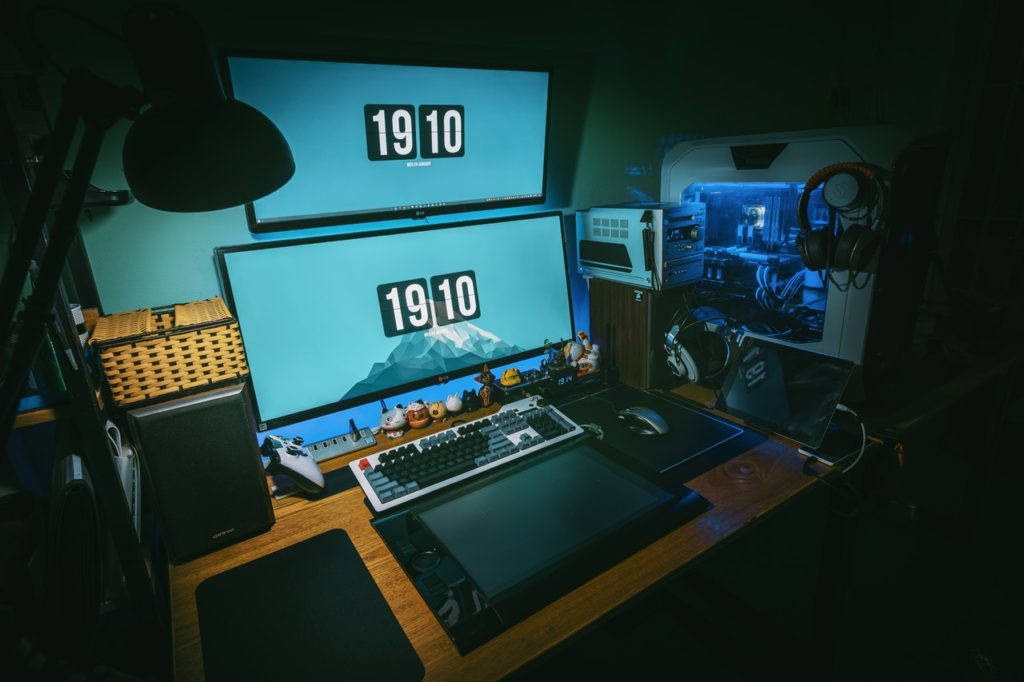For the past two months or so, we’ve all been hearing about Nvidia and their RTX 30-series cards, but just last week, it seems team red had something to say, and they delivered. If you were watching live on premier day, then the catchline “Where Gaming Begins” will definitely have struck a chord with you when AMD unveiled their Radeon RX 6000 series graphics cards.
It seems AMD’s roadmap for 7nm architecture, Ryzen, and Big Navi are finally coming together, and all their hard work is coming at a huge payoff. As of now, headlines are revolving around team red’s performance numbers, and all eyes are waiting on the release date for both their next-gen GPUs and Rzyen 5000 processors. But more importantly, RDNA 2 seeks to take the crown of value and even the throne for performance.
Goes Head To Head With Nvidia’s Lineup
For the longest time, the conventional consumer mindset would acknowledge that Nvidia offered the top performance while AMD offered better budget options and value with their graphics cards. You would have to go way back to the early stages of tech development and innovation to see both of these companies go head to head. However, team red has distinctively stepped up their game and are matching blow for blow with Nvidia’s Ampere architecture.
Radeon RX 6800 vs. RTX 3070
At the entry-level, AMD’s answer to the RTX 3070 is the RX 6800, coming at $579, which is $80 more expensive than the RTX card at only $499. However, team red offers a higher boost clock of 1815 MHz, 16GB GDDR6 over Nvidia’s 8GB, a faster memory speed of 16 Gbps, and a higher TDP of 250W.
When you factor in the delays on lower-end SKUs for RTX 3000 series cards and the cancellation of higher VRAM variants, Radeon is becoming the more sensible and future-proof option. Plus, going off their revealed performance numbers, the Radeon RX 6800 is more than capable of achieving a stable 60 fps on 4K resolution, making high-resolution gaming much more accessible to the average consumer.
Radeon RX 6800 XT vs. RTX 3080
For the sweet-spot category, AMD counters Nvidia’s RTX 3080 with their Radeon RX 6800 XT, coming at $649, which is $50 cheaper than the RTX card with a price tag of $699. In this category, we can see both cards trading blows, with a faster boost clock of 2250 MHz, more VRAM at 16GB GDDR6, claiming upwards of 1600 Gbps in memory bandwidth, and all at a lower TDP of 300W. On Nvidia’s side, the RTX 3080 takes the faster memory featuring GDDR6X, a memory speed of 19 Gbps, and a larger memory bus of 320-bit.
However, the RTX card’s slight speed advantage cannot justify the lack of VRAM and lower TDP, which would force many builds to get a new power supply. Overall, making the team red’s lineup the obvious choice for digital creatives like website design & development, intensive rendering, and breaking through high-resolution.
Radeon RX 6900 XT vs. RTX 3090
Last but not least, AMD’s flagship top-end Radeon RX 6900 XT also gives the RTX 3090 cold sweats as it comes at a price tag of $999, which is an entire $500 cheaper. And based on team red’s performance comparison at 4K resolution, the Radeon card can match and even beat out the RTX 3090 in most titles.
Still, there is a clear gap between the features as the RTX card boasts 24GB GDDR6X over AMD’s recurring 16GB GDDR6 VRAM model. However, AMD achieves the same performance level at a much lower TDP of 300W and a faster boost clock of 2250 MHz, which is nothing to scoff at and a milestone worthy of applause for their engineering team.

What Gave Radeon Such A Huge Leap?
Overall, we are very excited to see where further innovation, progress, and frontiers both tech companies will continue to reach and break. But, how exactly did AMD manage to catch up in such a short amount of time and go head to head with Nvidia’s latest Ampere architecture?
As of now, we can attribute the increase in performance to three things. Number one is the new RDNA 2 Architecture, currently working on the advanced 7nm node; we can only expect more to come. Number two is their revolutionary infinity cache, they didn’t go much into detail about their infinity cache, but AMD claims that this eases memory bandwidth concerns and helps them reach higher numbers. Number three is Smart Access Memory, which potentially removes bottleneck issues and taps the full potential of the Radeon card when you pair it with a Ryzen 5000 processor.
Still, Can Stock Meet Demand?
Despite all the good points, supply is where it all boils down, and with AMD’s release date for the Radeon 6800 and 6800 XT coming this November 18, we can only hope that stock will not be an issue. Pushing back the 6900 XT for December 8 does seem hopeful, but we can never say sure. Hopefully, we won’t see a repeat of a paper release, and everyone gets their hands on the Radeon 6000 series cards.
